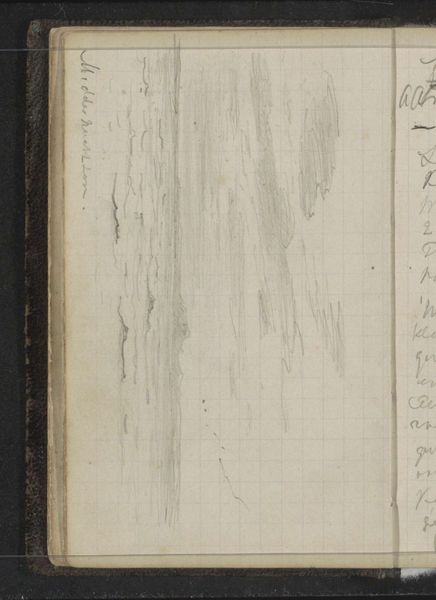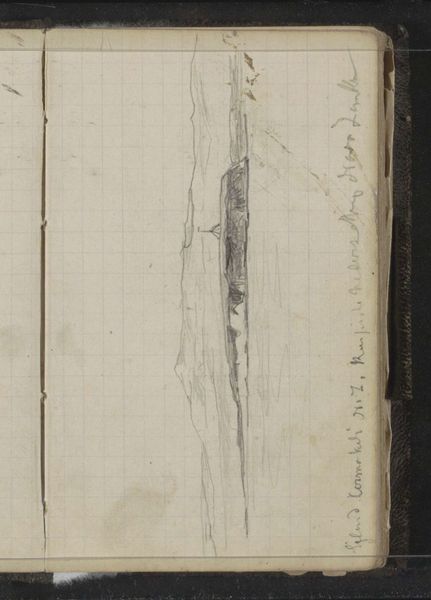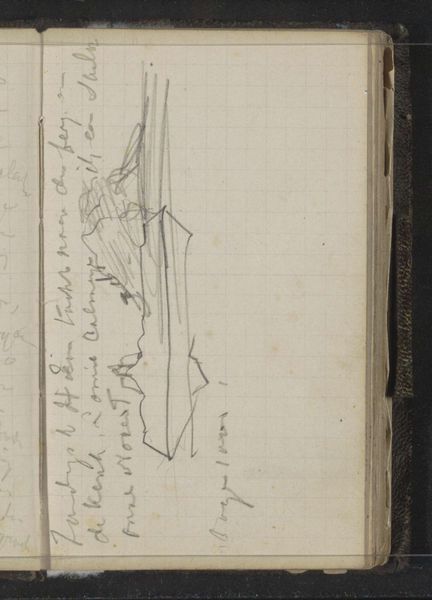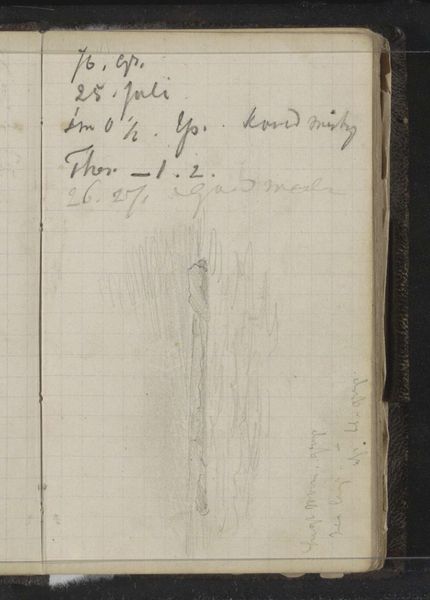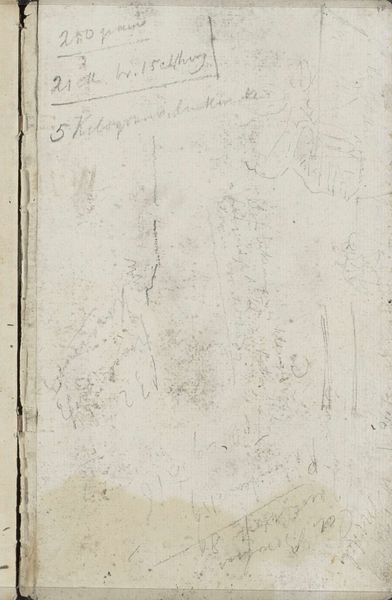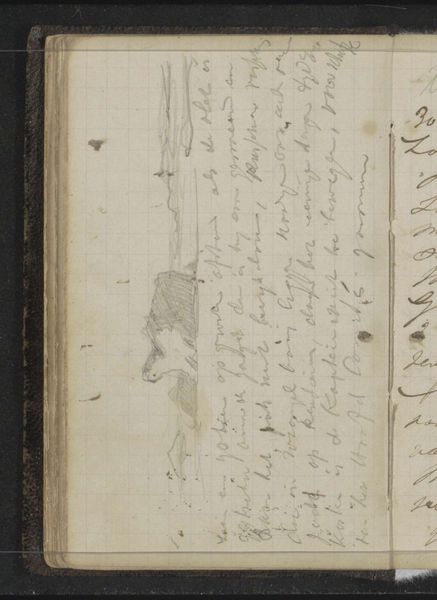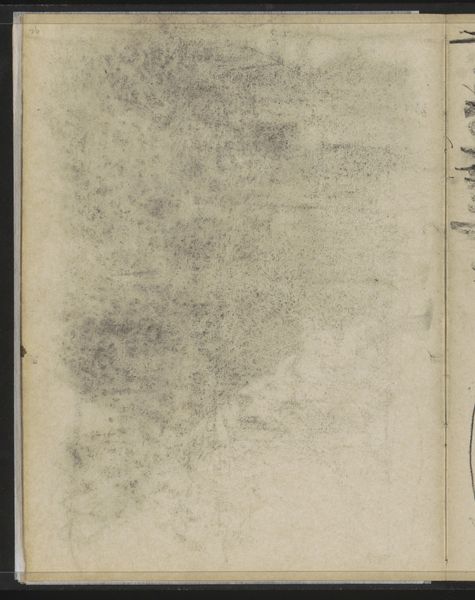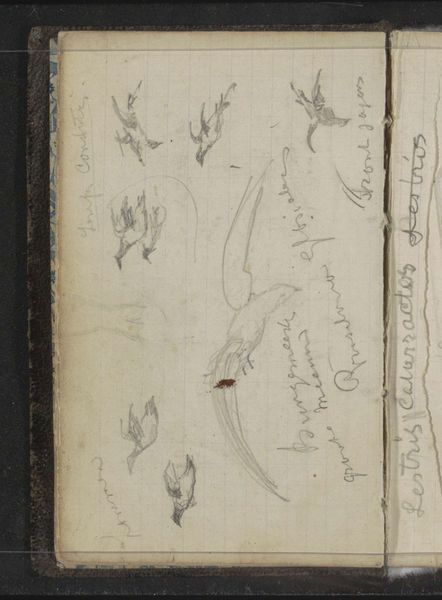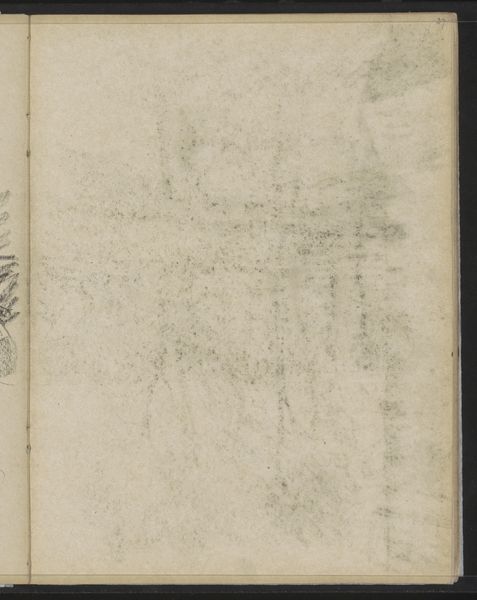
drawing, pencil
#
drawing
#
impressionism
#
landscape
#
pencil
Copyright: Rijks Museum: Open Domain
Louis Apol made this pencil drawing of an iceberg, shrouded in mist, in the late 19th or early 20th century. At first glance, this quick sketch in a notebook might seem like a simple nature study. But consider the context: this was a time of great expeditions, when intrepid explorers charted unknown territories, often with artists in tow. Apol was known for his winter landscapes, capturing the stark beauty of the Dutch landscape under snow. This drawing, however, takes us far from the familiar. Icebergs, symbols of the Arctic and Antarctic, represented the sublime power of nature. It's interesting to note the use of a grid in the notebook, perhaps hinting at the scientific impulse to measure and classify the natural world. To fully understand Apol's iceberg, we might delve into travel journals, scientific reports, and the art market of the time. What did icebergs mean to the Dutch imagination? How did this image reflect or challenge the dominant views of nature and exploration? It is through this kind of historical inquiry that we come to a richer understanding of art.
Comments
No comments
Be the first to comment and join the conversation on the ultimate creative platform.

